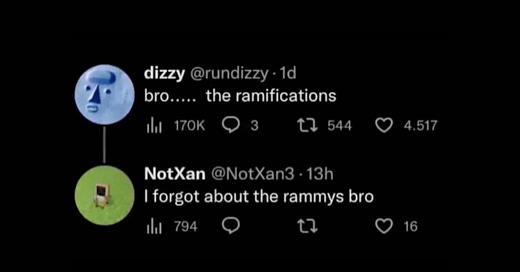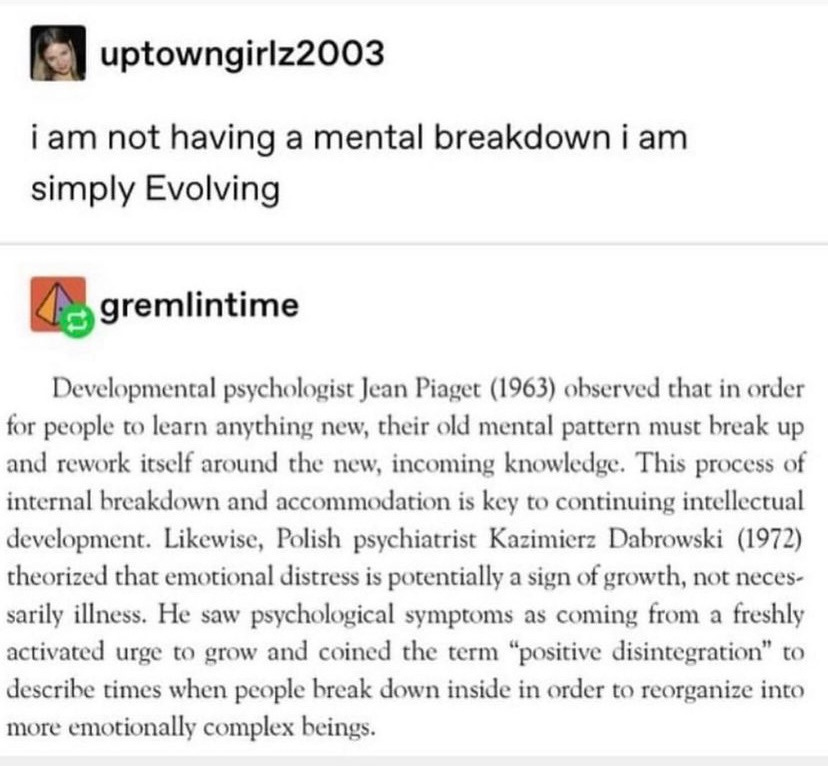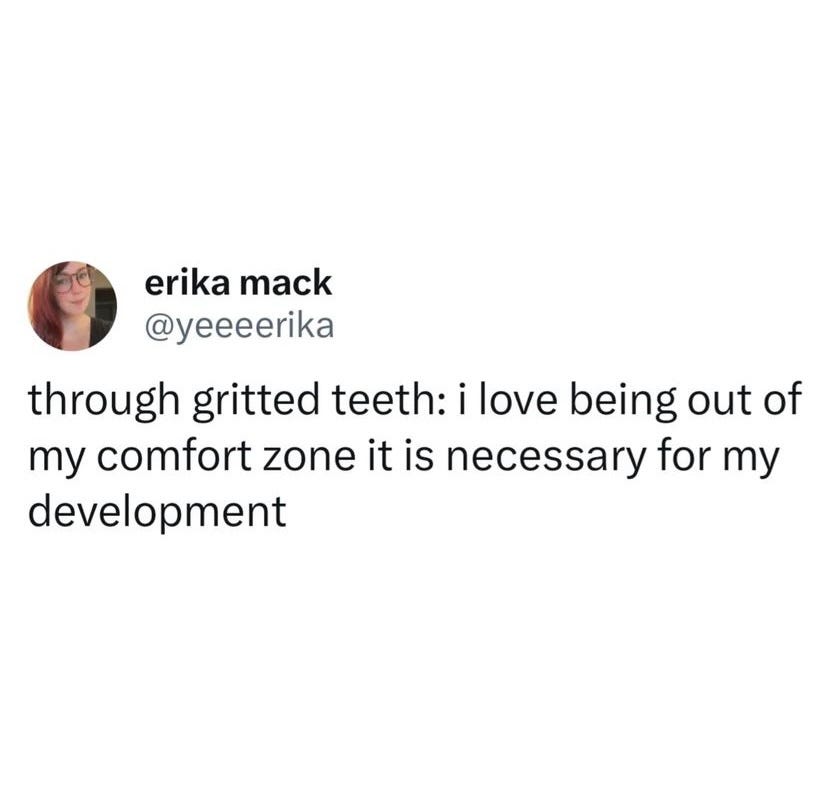Do you know how caterpillars become butterflies?
I thought I did. I assumed they wrapped themselves up in a cozy little cocoon, underwent some quiet chemical changes, and then after some time passed in hibernation, emerged a beautiful, delicate butterfly.
APPARENTLY, NO.
Neeeuuuoo.
Caterpillars digest themselves.
caterpillar soup
“First, the caterpillar digests itself, releasing enzymes to dissolve all of its tissues,” this Scientific American article explains. “If you were to cut open a cocoon or chrysalis at just the right time, caterpillar soup would ooze out. But the contents of the pupa are not entirely an amorphous mess. Certain highly organized groups of cells known as imaginal discs survive the digestive process.”
These imaginal discs are apparently cells with a time-locked memory—they’ve been inside the caterpillar since before it even emerged from its egg, and contain all the information needed to eventually form adult butterfly structures like eyes, wings, legs, and so on.
Caterpillars don’t just transform; they start over from scratch. A caterpillar can’t become a more mature version of itself unless it breaks its own body down into a goopy mess and trusts its imaginal cells, who’ve always known what’s coming, to do their thing.
This information just re-arranged my brain a little. Obviously poetic, but also…brutal?
Frank and Dave (the nicknames I’ve given to my last two brain cells) just broke out their Obsession bulletin board, where random bits of information are connected by bright red swaths of string in my mind.
Frank is pacing: Are we the caterpillar? Is this why we feel overwhelmed and unsure of everything lately?
Dave chimes in, absolutely hyped: Does our body know which direction we’re headed, even if we don’t, holding hidden instructions in our cells? Are we breaking down in order to change?!
For weeks, I’d been churning over this “breaking down in order to change” caterpillar metaphor and all the questions that came with it—and then, just like that,
blessed my inbox with a newsletter titled, “entering my goo era” and I just about jumped out my chair.The entire piece slaps, but one of my favorite parts:
“Entering a goo era means making my heart a safe cocoon for all versions of myself: past, present and future. Desire for change does not mean who I am now is not enough, desire for change is abundance reclamation. Desire for change is a clearing of new paths to explore. Sometimes naming my dreams feels disheartening because I create a deep divide between my present and changed self. In this binary my current self feels small and not enough. When I enter a goo era, I hold close that I am the other side of the bridge. I don’t withhold softness from myself till I’ve reached a certain level. On the goo timeline, softness is abundantly shared at all points of the journey.”
(Subscribe to Annika’s excellent newsletter, Annika is Dreaming, here.)
Everything about the ‘goo era’ hits home:
The grief that comes with naming your dreams, because you’re either going to make changes to get there or you aren’t, but now you’ve said it, and the gap between here and there aches. The confusing sense of splitting, of a divided self, of a past you can’t go back to and a future too blurry to get excited about. The necessity of offering ourselves softness throughout each phase of change, so we can actually survive the total deconstruction that comes with our transformation.
I’ve noticed that my most distressing emotions show up whenever I’m craving or navigating change: Scattered. Freaked out. Numb-ish. Guarded. Easily annoyed. Pissed off. Defensive. Self-critical. Future-tripping. Moody, looping thoughts. The Big Sad.
It’s hard to believe feelings THIS uncomfortable could ever be evidence of something good, but then—
positive disintegration
You know when you have a “lol, same” reaction to a meme, and then, as you keep reading, it sneaks up and punches you in the feelings?
uptowngirlz2003 writes:
“i am not having a mental breakdown i am simply Evolving”
…and gremlintime replies with this screenshot quote:
“Developmental psychologist Jean Piaget (1963) observed that in order for people to learn anything new, their old mental pattern must break up and rework itself around the new, incoming knowledge. This process of internal breakdown and accommodation is key to continuing intellectual development. Likewise, Polish psychiatrist Kazimierz Dabrowski (1972) theorized that emotional distress is potentially a sign of growth, not necessarily illness. He saw psychological symptoms as coming from a freshly activated urge to grow and coined the term ‘positive disintegration’ to describe times when people break down inside in order to reorganize into more emotionally complex beings.”
This was the first I’d ever heard of ‘positive disintegration,’ but Frank and Dave were quick to tie mental strings between this concept and ‘caterpillars’ on their Obsession board. Breaking down inside to become more emotionally complex beings? A caterpillar digesting itself to transform into it’s mature self? These things are connected, right?!
There’s a line in that paragraph that I can’t shake:
“…that emotional distress is potentially a sign of growth, not necessarily illness.”
We know that transformation requires some sort of breakdown, and breakdowns are inherently uncomfortable. But how many of us can tell the difference between discomfort signaling that something is wrong, that we’re in danger—and discomfort signaling that something is right, that we’re growing?
discomfort vs. danger
It’s easy for us to associate positive emotions like contentment, confidence, or happiness with growth, and even easier to think of them as a result of growth.
But when have we (society, dominant culture, social media) ever described psychological symptoms as potential signs of growth?
When we describe something as a symptom, we’re immediately implying it’s something unhealthy, something wrong, something to be fixed by medicine. Case in point: Sadness and happiness are both emotions, but only one of those is ever described as a symptom, because no one describes happiness as something that should be cured.
[Aside: Just to be clear, I am NOT suggesting that psychological disorders don’t exist! Suffering needs to be taken seriously, and de-stigmatized, by all of us. If, for some of us, this means choosing to seek medical or psychiatric treatment as a form of support, then we should make it more accessible to do so—while working together to make these systems of treatment less traumatic, starting by listening to the people who have been most harmed and marginalized by them in the first place. ♥︎]
What happens when we’re socialized to assume our upsetting feelings are problems to be cured, instead of coded messages about the kind of support we need in this moment?
When I fear the uncomfortable emotions that accompany my growth, I “other” the very parts of myself that need the most support, the most tenderness, and the most patience. When I get anxious that I’m anxious, when I’m annoyed about the fact that I’m annoyed, when I get angry at myself for being angry about something, I create mutated, monster emotions; compound feelings that threaten to overwhelm my vulnerable, gooey self.
Fearing my own discomfort, instead of welcoming it as proof I’m changing, is like breaking open the cocoon when I’m still caterpillar-soup.
What if we’re making growth more difficult for ourselves by confusing feelings of discomfort with the threat of danger?
My body has confused discomfort with danger my entire life, and it’s only in the past three years that I’ve started to tease apart that knot.
To be fair to my nervous system, some of this Discomfort = Danger mixup was necessary, a protective hyper-vigilance created by lived trauma. But most of it? I think most of my body’s confusion comes from being socialized as a white woman in America. I was taught (subliminally) that everything is trying to kill me, that unfortunately this cannot be helped or changed, and that the closest thing I’ll get to a societal apology for this perpetual threat of violence is somehow being entitled to pursue absolute comfort in every facet of my life.
This (wildly incorrect, deeply racist and ableist) assumption of my ‘right to comfort’ as a white woman has been so culturally normalized that it’s practically invisible to people with my shared skin tone—which makes it even more dangerous.
This means that befriending my discomfort isn’t just worthwhile because it’s a natural part of change, or feasible because the emotions are temporary—it’s also an essential step in reducing the harm that I cause.
I’ve been changing, and I couldn’t explain how until now
I’m reframing all my choices. Unmasking. I’m soaking in new ideas and questioning things I once believed uncritically. Whatever change is coming, it feels like I’m preparing to turn a sharp corner on a freeway: I’ve slowed to a crawl, just trying to keep all four wheels touching the road on the banked curve.
A past version of me would add cruel, self-critical thoughts to this season of gooeyness. Instead, I’m sitting with the soupy-ness and trying to teach my brain new ways of understanding what I feel:
They’re not “positive” emotions, they’re comfortable emotions. They’re not “negative” emotions, they’re uncomfortable emotions.
I’m learning that not only can I expect to feel these un-comfy feelings whenever I’m adapting to change—I can choose to anticipate them, plan for them, welcome them with softness. (I made a couple short videos about this, back in April—here and here.)
Not knowing exactly where I’m going doesn’t mean I’ve failed, it means I’m going somewhere new, somewhere unfamiliar. I’m not upset because I’m “lost,” I’m upset because it’s energetically expensive to navigate this much unfamiliar territory, and uncomfortable feelings always follow an energy-drain.
When I put myself in the caterpillar’s metaphorical shoes, I’m not just taking a little nap while some changes happen subconsciously. I’m DIGESTING myself; breaking down into goopy, soupy parts, and falling apart on purpose. That’s so chaotic! Total gore-fest. No wonder I’m not okay.
what if…
*Frank and Dave excitedly tie pieces of mental string between each idea*
What if the ‘personal growth’ we’re so culturally obsessed with actually requires some level of emotional distress for it to happen? What if we (society, dominant culture, social media) are misunderstanding this discomfort by a) dismissing it, b) pathologizing it, or c) glorifying it?
What if the gripping fear of “not knowing” where we’re going next —that feeling that something inside us is waiting, holding its breath, broken down— isn’t evidence of failure, but evidence that we’re mid-transformation, in the gory phase of growth?
What if some kinds of emotional distress are not problems to be cured, but coded messages about the kind of support we need in this particular set of circumstances?
What if we could befriend the inherent discomfort of The Breakdown™️, by realizing that who we were and who we’re becoming are not different people, but the same Being: recycled, composted, and recreated in a form better-suited to this next phase of being alive?
Anyways, I feel weird right now and I’m refusing to panic about it.
Join me! Let’s feel weird and refuse to panic about it, together.
I’m wondering what colorful arrangement of shapes will appear on our fresh wings, when we emerge out of these gory growth cocoons?
—Alexis
looking for the audio edition of this newsletter? here you go!
PS: Don’t see a button? That’s because only paid subscribers have access to audio and video content right now. You can upgrade here. Or, if you’d like to make an access request for the audio, send me a message and I’ll email it to you asap. ❤️
Keep reading with a 7-day free trial
Subscribe to how to like being alive to keep reading this post and get 7 days of free access to the full post archives.








